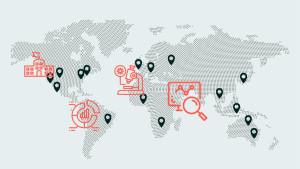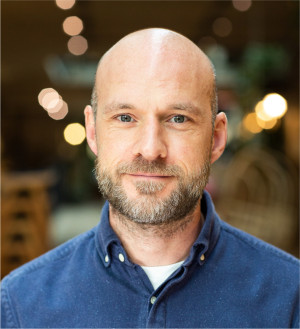Building Clusters, Collectively
How we’re making spaces for innovation, built on collaboration

This year we’ve been busy co-creating a new innovation district in central London that brings together world-leading universities, medical researchers and businesses. It’s a unique project that combines the best of an innovation cluster with public services, building an organisation that aims to positively transform health for all by increasing collaboration at every level.
The cluster model isn’t a new one, with everyone surely aware that in cities similar businesses end up close together (especially estate agents). The benefits of having closely located academia, businesses and practitioners is well recognised in generating huge economic output and big technical breakthroughs, from Palo Alto to Boston to the UK’s Silicon Fens and Roundabouts.
Like our London project, clusters are now increasingly being seen as a powerful way for cities to face both their post-covid economic recovery and the climate crisis. There is a growing appetite to build innovation ecosystems with purpose – setting out to answer big problems in health, technology, energy by carefully combining an area’s forces to massively multiply its reach and value.
So how do you start one? It obviously doesn’t come without its challenges. By their nature they’re messy – every place is unique and they comprise a tangle of organisations of hugely varied scales and priorities. There are however some common approaches that we’ve developed that we wanted to share for anyone in a similar place.
Seek out and map the connections
It’s well known that successful innovation requires both a system and a strategy. It needs a vibrant set of connections that enable the exchange of knowledge between partners, sharing of opportunities, and access to end users, which a densely packed city has in abundance. It also means opening up to uncertainties and unexpected connections, which for large businesses and institutions can be an uneasy process. What will happen to the identity of our research institute once it’s part of a larger project? How can we make sure our new building is able to play a role in this environment?
In our recent projects, we have brought partners together right at the start of projects to collectively map the innovation system in collaborative working sessions. By taking a systems view we are able to create a shared visual understanding of what’s really driving activity within the cluster and help organisations to understand the role that they can play to amplify this.
Making a map should be practical and creative too. In White City in west London we took the opportunity to explore the existing assets and new sources of energy in an emerging tech cluster by commissioning a local illustrator and distributing the area’s first ever neighbourhood map.
Sketch the small details
In our experience, ambitions for an innovation district usually begin with a big picture – advancing healthcare, transforming energy or similarly bold ambitions. These are very useful aims for multiple groups to gather around and build a coalition of the interested, but they are rarely enough on their own to build a sustainable long-term place. To make these dreams a reality, it’s important to quickly get into details around the motivations and challenges and find the real reasons why and how this place will function in order to bring a wider community along with you.
We believe that sketching out small sections of the future, early on, is a simple and highly effective way to get past this big picture thinking. In London, we worked with stakeholder groups to collaboratively create social media campaigns for this new district that very quickly helped tackle the question of what this place actually does, and what it might look and sound like. This approach was also applied to prototyping the governance and organisational design of the district, by running co-design workshops with leadership to speculate on different models and quickly test them out and gain support of the wider organisation early on in the process.
Test with the collective
In the spirit of open innovation, you will always get there faster and better when you invite others to join you. It’s especially important for innovation districts to remember that their community is not just another audience. Rather than setting strategic plans from the top, successful clusters are able to gather input from broad groups and trust collective intelligence to test plans as they emerge and push forwards together as a community.
In our work participation isn’t a nice-to-have, it’s integral to developing a vibrant place. If it’s treated like a ‘consultation’ or an exercise getting approval it’s a missed opportunity. In the context of developing a place, participation is not only more effective, it’s an opportunity to actively engage the people who are the major point of difference and source of character for a district.
This means committing to a process that enables meaningful participation from the start. In our work to develop a new institute in the Greenwich Design District, this meant inviting an audience of industry experts into a public pitch session early into the development, to tackle difficult questions head-on and build a culture of open collaborative working right from the start. In other projects we have used hackathon sessions and design sprints with diverse groups to bring together public and organisational leaders in the same room.



